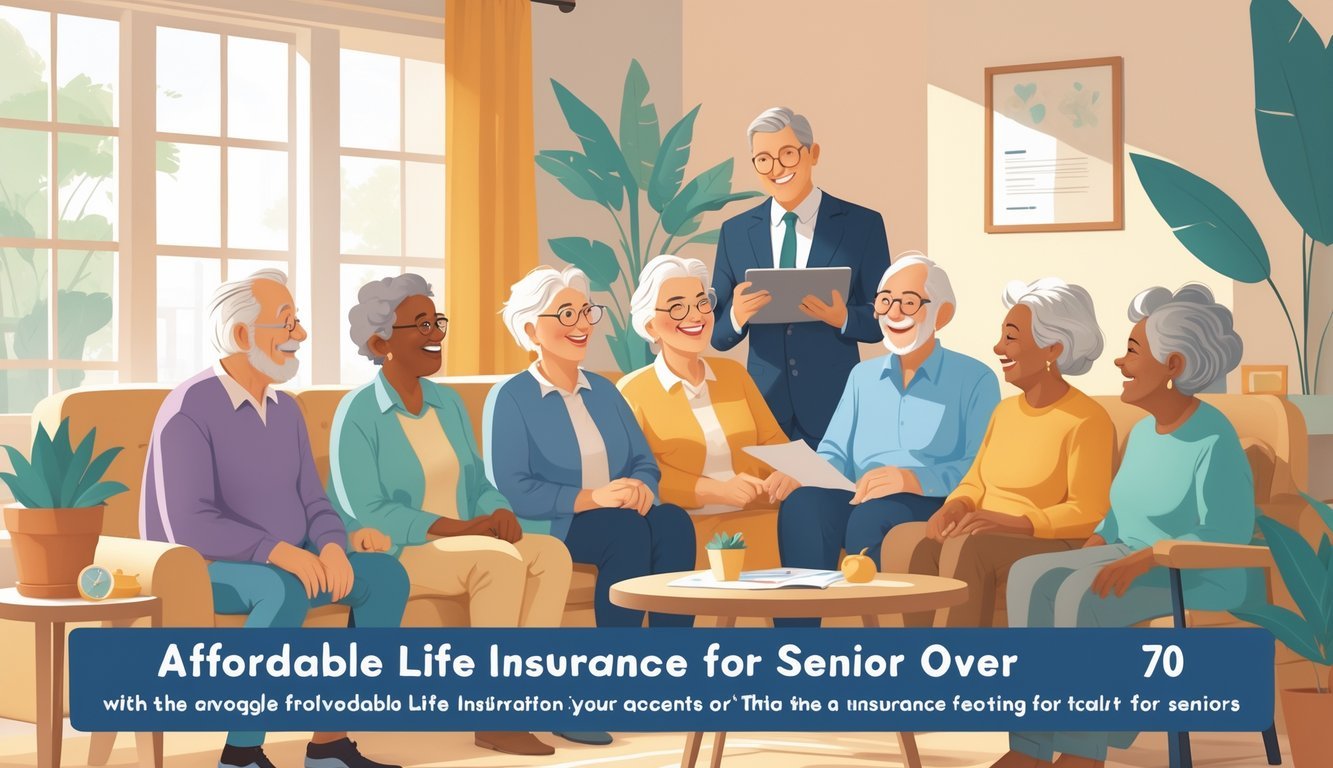PsychNewsDaily Publishers
100 Summit Drive
Burlington, MA, 01803
Telephone: (320) 349-2484
PsychNewsDaily Publishers
100 Summit Drive
Burlington, MA, 01803
Telephone: (320) 349-2484
Finding affordable life insurance after age 70 is achievable, with options like term life, whole life, or final expense insurance available without medical exams.

Finding affordable life insurance after age 70 might seem tough, but it’s totally doable. Plenty of insurers design plans just for seniors, so you can find something that fits your budget and health situation.
You’ll see affordable policies like whole life, term life, or final expense insurance, with some starting as low as $10 a month.
Your age and health will influence the price, but don’t worry—there are choices even if you’ve got health concerns. Some plans skip medical exams or health questions and still give you solid coverage.
If you understand these options, you can pick a policy that works for you without spending a fortune.
It helps to know what to look for and how coverage works. This guide aims to make the process less stressful and a bit easier.

If you want affordable life insurance after age 70, you’ll need to know your options and how coverage works. Age and health affect which plans you can get, what they’ll cost, and how much they’ll pay out.
Different policies offer benefits like cash value or lower premiums. It’s a lot to think about, honestly.
As a senior, you’ll mostly see two types of life insurance: term life insurance and permanent life insurance.
Term life insurance covers you for a set number of years. It’s usually cheaper, but there’s no cash value. If you want coverage for a specific period, it’s a solid pick.
Permanent life insurance sticks with you for life and can build some cash value. Types include whole life, universal life, and variable life insurance.
These cost more but might be worth it if you want lifelong coverage or a built-in savings option.
A lot of seniors go for final expense or burial insurance. These smaller policies handle funeral costs and usually have easier approval with lower face amounts.
Most seniors pick coverage between $10,000 and $50,000. That’s enough for typical final expenses or burial costs.
You can get larger death benefits, but they’ll cost more.
Insurers limit maximum coverage as you age. Many cap policies or stop offering them after age 85 or 90.
Always check the death benefit amount. Some policies pay a flat amount, while others might change based on what you’ve paid in premiums or other details.
Whole life and universal life insurance are pretty common choices for seniors.
Term life insurance is less common after 70, but you can still find it for short periods and smaller amounts.
Age mostly decides if you can get insured and what you’ll pay. After 70, premiums jump fast, and most insurers stop offering coverage by 85 or 90.
Health plays a big role too. Some policies ask for a medical exam or health questions. If your health isn’t great, premiums go up or you might get denied.
You can skip health questions with guaranteed issue or simplified issue policies. These cost more and offer less coverage, but you won’t need a medical exam.
Your health and age together decide your options and final price. It really pays to be honest and shop around.

To pick the right life insurance, you’ll want to look at the companies, the extras they offer, and what actually affects your premium. Find a policy that fits your budget, health, and coverage needs—no nasty surprises.
Check out financial strength ratings from AM Best when you look at companies. Names like Mutual of Omaha, State Farm, New York Life, and MassMutual usually have strong ratings. That means they’re likely to pay claims when you need them.
Customer service really matters. Some companies handle complaints better, so you get better support. USAA and Nationwide often get good feedback from seniors.
Rates can change based on where you live, so your location or zip code matters. Some insurers focus on seniors, like AARP members’ plans, or those with no medical exam or guaranteed issue policies.
Riders add value to your policy without costing a ton. Some popular riders are:
If you want savings, look for cash value life insurance. If not, simpler term life insurance usually costs less.
See if the policy gives you reliable illustrations so you know what to expect later. Simplified issue or guaranteed issue policies skip medical exams, but you’ll pay more.
The biggest factors are your age and health status. Healthy 70-year-olds who don’t smoke might pay $233 to $351 a month for $500,000 coverage.
Gender affects price—women usually pay less. Your location changes rates too, since insurers adjust for local risks.
The type of policy really changes the cost. Term life is cheaper but only lasts a set time. Whole life or cash value policies cost more but offer savings.
Your company choice and any riders you add also affect your premium. Try to balance your budget with the coverage you actually need.

You can get life insurance without a medical exam, even if you’re over 75. If you compare policies and prices, you’ll find something that fits your needs and budget.
You can choose simplified issue or guaranteed issue policies that skip the medical exam. They usually offer smaller coverage amounts and approve you faster.
Look into term life or final expense insurance with lower coverage amounts. Get quotes from several companies to see which one fits your budget.
Some states and programs offer benefits related to life insurance, but private companies provide most life insurance. Check your local government resources to see if there’s help available.
Health, smoking status, and coverage amount matter most. Being older means higher premiums, but good health can help lower your cost.
Term life insurance is a popular choice at 72. It covers you for a set time and usually has lower monthly payments than whole life policies.
Absolutely. Plenty of insurers provide affordable plans for people over 60.
If you keep your coverage amount reasonable, you’ll likely find a good deal. Take some time to compare term and final expense policies—sometimes, one fits better than the other.